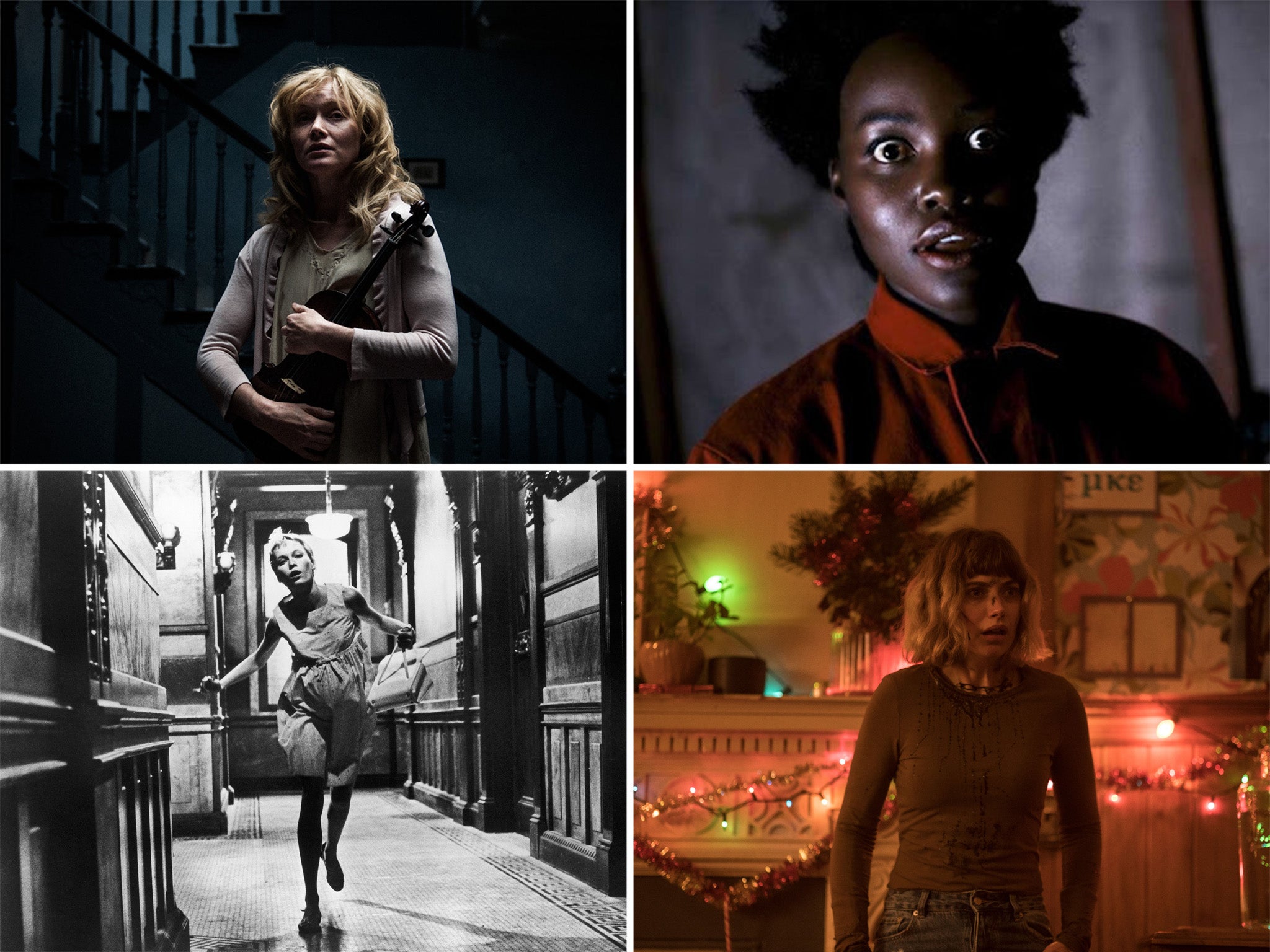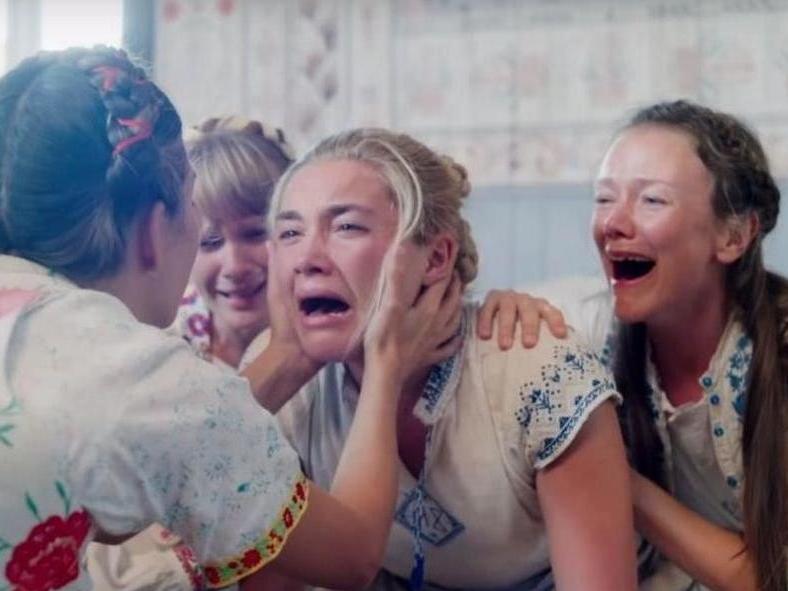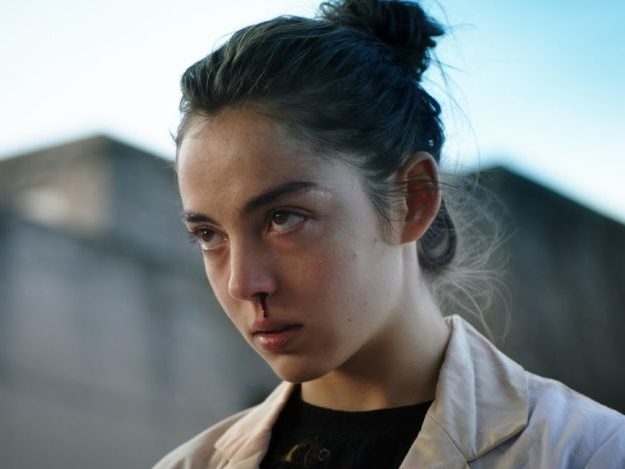Audiences love to see women suffer on screen, but female filmmakers are being shut out of horror
As Women in Horror Month begins, Nicola Skinner explores the frightening reality for women working in horror today

Pitted in a fight for survival, with horrible odds on making it out in one piece. Being treated with excessive cruelty, then hounded out of safe spaces while shadowy baddies threaten you with unspeakable things... No, this isn’t the plot of the latest horror film. This is what it’s like to make one as a woman.
When Sophia Takal – the first ever woman to direct a film for horror production company Blumhouse – released her remake of 1970s cult slasher flick Black Christmas last December, the online reaction was arguably more terrifying than the film. One Twitter user, so incensed at the affrontery of this retelling, posted that the film made him root for every man in every horror film to rape the female lead. The film’s screenwriter, April Wolfe, also reported a litany of foul-mouthed abuse. Takal has now made her Twitter account private. I contacted her agency to see if she is working on anything else, but have been met with silence.
Even at a subtler, less notably shocking level, the barriers to finding a foothold – let alone peer-to-peer respect – within the industry are real.
“I’ve been working in this industry for decades,” says Faye Jackson, a UK-based director with many productions to her name, not least her disturbing body-horror short Changeling (2019), which deals with identity obliteration in motherhood. “I’ve got a huge background of expertise, not just as a director but also with technical knowledge, particularly in special effects. But I can find a lot of resistance on film sets when people just seem unable to take on board the fact that I know what I’m talking about. It mostly is from men.”
Melanie Light’s directorial credits include the award-winning 2014 short The Herd, which imagines women caged in squalid steel traps and forced to give birth in cruel conditions purely for their breast milk. (And if you think that sounds scary, wait for the documentary footage played over the credits, which achieves more for the anti-dairy movement in 20 seconds than a year’s worth of earnest campaigning.) Melanie’s passion for the genre has led to her curating a selection of female-directed horror shorts during February’s annual WiHM (Women in Horror Month). She explains, somewhat wearily, her way of dealing with problems on set before a shoot. “Everyone will be standing around trying to solve a problem, and I know the answer. What I do now is find the nearest man on set, explain the solution to him, and ask him to tell the rest. Because they’ll listen to him, and they won’t listen to me.”
And there lies the tension within this genre. It is both progressive and backwards. The people working within it are capable of either subverting or enforcing societal norms. At its best, horror can pick these apart with its bony fingers – see Get Out, Night of the Living Dead, Rosemary’s Baby and The Babadook for their ruthless dissections of racism and domestic oppression – but at its worst, horror is as stale and toxic as a shuffling zombie that just refuses to die.
Let’s look at the positives – such as they are. In 2017, Google and the Geena Davis Institute on Gender in Media reported that this was the only genre where women appear on screen more than men (53 per cent) and the genre in which they are heard the most (47 per cent). Unfortunately, I don’t have the stats for how much of this female dialogue is screams.
Then there are the performances. Some of the most exciting acting last year alone came entombed in fear: Lupita Nyong’o’s career-defining roles in Jordan Peele’s Us, as a woman experiencing the terror of her “shadow twin”. Florence Pugh’s starring role in Midsommar, as a traumatised young woman initiated into the bright colours and dark rituals of a cult. Audiences love to see women suffer on screen, and it often seems to deliver career bests, perhaps because some aspects of the female experience are rooted in fear, dismay and rage. But just because we’re seeing women on the screen, it doesn’t mean we’re empowering them off it.

In her groundbreaking essay, “Visual Pleasure and Narrative Cinema”, film theorist Laura Mulvey states: “Women are allowed to be the bearer of meaning, but not the creator of it.” In other words, we allow women to give flesh to a male narrative, rather than tell their own stories – and when they do, they risk ridicule, abuse or rejection. Sadly, this isn’t exclusive to the horror genre. Just look at the all-male Best Director nominations for the Baftas, Golden Globes and Oscars this year. (The Baftas have not had a female Best Director nomination for seven years in a row. Full marks for consistency, lads.)
But when only one type of artist is allowed a place at the top table, the menu gets really boring. If you’ve ever rolled your eyes at a horror plot as creaky as the floorboards in a cheesy haunted house, it’s because the storytellers are becoming too alike. If one white male pays tribute to the work of another white male, and then that white male produces a referential homage to the work of another white male, the genre ends up devouring itself in admiration, and originality eventually curdles into pastiche. Hannah Forman, founder of WiHM, explains why our cultural horror touchstones can slip into parody. “One thing that doesn’t get acknowledged often enough is that our beloved horror film genre is primarily stories from white male filmmakers’ perspective on what ‘horror’ looks like and should represent,” she says. “This developed into a baseline against which all horror films are held. For example, you will always hear film marketing quotes like ‘The best film since The Texas Chainsaw Massacre!’ because the white male films of the Eighties became the ‘gold standard’ for what makes a horror film successful at the box office.”
This is exactly why Forman set up WiHM – to show and encourage new talent and ways of storytelling that she felt weren’t being given the same exposure as established directors. “If we give support, funding and space to those with diverse stories and perspectives, we can experience an array of fresh terrors to shock and surprise us.”
She acknowledges the pressure put upon the few female directors, such as Sophia Takal, when they take on horror. “Women who get mid- to high-profile directing jobs carry a heavy burden that men never will – they will either be a saviour or a ruiner,” she explains. “This one is really brutal. If a woman is lucky enough to direct a high-profile film and does a great job, then it may open the door to a second one. Maybe. But, if they get bad reviews, instead of reflecting on that one director, the criticism of her becomes a statement on women’s abilities as a whole to make films in the first place.”

The boys’ club mentality at the top, for all its faults, does have one thing going for it. It seems to have created a subculture teeming with talent. One glance at the horror shorts produced, written and directed by women reveals a staggering variety of stories, each one more disturbing than the question, “Why did Happy Death Day 2 U get made?”
And on the rare occasions when women break through with the right combination of support and funding, you’ll find them absolutely killing it – the aforementioned The Babadook, directed by Jennifer Kent; French vegan horror Raw, directed by Julia Ducournau; the remake of Rabid by the Soska Sisters, to name a few. This May sees the release of the hotly anticipated Saint Maud, directed by Rose Glass in her debut. It follows a delusional carer (the wonderful Morfydd Clark, last seen on our telly in both Dracula and His Dark Materials) who is pitted against Jennifer Ehle’s cynical, worldly dancer.
What all these films have in common is a conspicuous lack of traditional baddies. Instead, they shine a light on the unseen demons within all of us, on the psychodramas that aren’t usually given centre stage by the establishment. They widen the scope and reach of horror, reaching right out into the abyss and making it relevant again. For that, they must be applauded.
The more that female horror is funded, created, distributed and recognised, the more invigorating film-making will be, because this art form needs fresh blood to survive. They may be battered and bruised, but with women like these clawing their way through the industry, determined to make their stories their way, we might be about to see a golden age of horror – one that will leave audiences screaming for more.
WiHM runs throughout February
Join our commenting forum
Join thought-provoking conversations, follow other Independent readers and see their replies
Comments